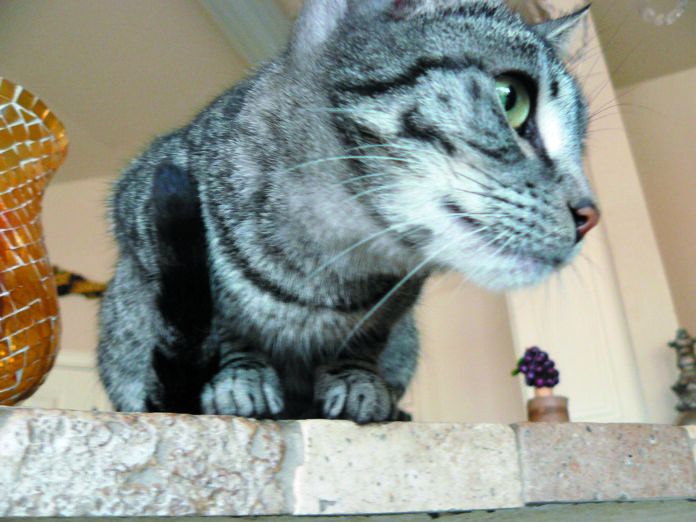Michael H. Jaffe, DVM, service chief of small animal surgery at the Mississippi State University College of Veterinary Medicine, relates the story of the cat owner who told him that their cat “finally learned” not to jump on the kitchen table after 10 years. Dr. Jaffe wasn’t convinced. “If the cat could get up on the table, she would,” he says. “I thought the change in the cat’s behavior was a possible sign of arthritis pain.”
Despite the owner’s apparent misinterpretation, the anecdote underlines an important point. When it comes to helping a veterinarian diagnose an orthopedic problem in your cat so it can be properly treated and your pet taken out of pain, what you observe at home provides important clues. Those clues are particularly critical because they make the orthopedic examination go faster. “When we’re doing an orthopedic exam on dogs,” Dr. Jaffe says, “we pretty much are in control of when the exam is over. When we’re doing an orthopedic exam on cats, it’s really the cat who is in charge of this situation. They determine when the exam is over.”
In other words, cats aren’t necessarily going to allow the vet to take his time isolating each bone and flexing and extending each joint individually. The doctor has to work efficiently. The more information you can offer up front, the better he can target what he’s looking for.
Questions the vet might ask
Dr. Jaffe says the vet might ask the following questions for a cat whose walking and general moving about is not what it was. You might not know all the answers, but the more information you can give, the more successful the exam can be.
1. How and when did the lameness begin? If it was all of a sudden, it could be the result of a trauma such as a bite from another animal as opposed to creeping problems with mobility due to worsening arthritis or some other chronic condition.
2. Does the condition improve after rest? Does it worsen? Cats who are stiff and sore when they first get up are likely to have some level of arthritis or tendon pain. Cats who worsen as the day progresses often have a muscle-related injury.
3. Does the condition come and go or is it a daily occurrence? If it occurs every day, it may be a sign of ongoing pain due to arthritis (ongoing lameness) as opposed to, say, a more mild muscle strain (intermittent lameness).
4. Is there a clicking or popping sound when your cat walks? That could indicate a torn meniscus, which normally acts as a shock absorber between the shin bone (tibia) and the thigh bone (femur). It could also be a normal muscle or joint popping. The key is whether or not it is associated with limping. A torn meniscus will be accompanied by a limp.
5. If your cat still jumps off the counter, does he do it as he always has, or is he slinking off rather than jumping? Slinking could be an attempt to shorten the distance between your pet and the floor so he lands with less impact and doesn’t cause himself extra pain. This is common in cats with arthritis.
6. Has your cat traveled recently? Depending upon where you live, exposure to ticks or other infectious organisms endemic to your area of the country may cause diseases we don’t normally think of. Such diseases can cause lameness.
The veterinarian will also want to examine your cat’s gait. This might not be easy. Your cat might just run into a corner and stay there, hunker down where he is, or simply keep pawing at the door in hopes of getting out. For that reason, Dr. Jaffe says, it’s a good idea to bring a video of your cat walking and doing cat things in the house. That will give the vet a good idea if your pet is moving as he should if the cat shuts down in the exam room.




